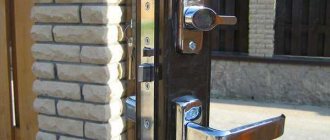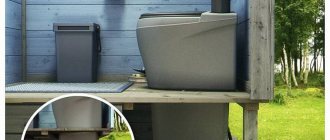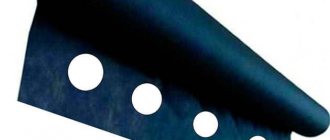Requirements for street locks
Here a discovery awaits us: there are no special locks for gates! Most manufacturers do not distinguish this category in their products. The exception is the Belgian company Locinox. So take the usual one - for wooden or metal doors.
Primary requirements:
- corrosion resistance,
- ease of installation,
- wear resistance,
- compactness,
- reliability,
- resistance to weather and mechanical influences,
- convenience.
The possibility of the structure freezing after a thaw (the main problem), or being covered with a layer of ice or snow, should be excluded.
A large system is not suitable for thin metal. And a product with an unprotected case will quickly become unusable due to street dust or moisture getting inside.
Overhead devices are more difficult to hack (requires a crowbar or an ax), but they are easier to install. Summer residents often choose a mortise design. It is better to install electromechanical or electromagnetic systems on doors made of corrugated sheets.
Electromechanical
These street locks are installed mainly on intercom doors; they are also used for garages and other buildings.
Form for paths - is it worth using and why?! Find out the answer to this question in the review and see the instructions for working with the form in the photo.Do-it-yourself water supply at the dacha - how to do it correctly and everything you need to know for proper water supply (photos and videos)
How to make a smokehouse with your own hands - drawings, diagrams, projects and features of building a smokehouse (145 photos and videos)
Their main advantage is that most of the locking devices belong to the category of anti-vandal locks.
Therefore, it will be extremely difficult to break into and damage such a lock; for this reason, attackers try not to mess with this type of lock.
The electromechanical lock comes complete with a panel with a built-in locking mechanism and a response interface. After installing both parts, power is connected to the device, after which the lock is ready to perform its function.
Gate locks - classification according to method of fastening
There are several mounting options. When choosing, you should take into account the door material, design, and also from which side it is closed - from the street or from the yard.
Mounted (barn)
This is a traditional outdoor gate lock, suitable for wooden door. Eyelets are required for use. The size is selected medium. Large models are heavy and not comfortable. And compact ones are less reliable.
The bow is the most frequently attacked element. It requires strength, compliance with the size of the eyes, and a diameter of at least 7.5-8 mm.
The main advantage is that you don’t have to install a lock. It's easy enough to hang. The bow is threaded through the eyes or other holes and snapped into place. Open with a key.
Flaws:
- Easily hackable.
- Opens only from the installation side.
- Sometimes difficulties arise in the cold.
- There is no rigid fixation.
In addition, the barn lock on the door notifies others about the absence of the owners, which increases the risk of unwanted “guests” entering from the street.
To install it, you need to prepare and secure eyelet hinges in advance - flat for wooden ones, corner ones for doors made of Euro picket fence, steel sheet or corrugated sheet.
Mortise mechanical
This is the most convenient option. It is opened from the outside with a key, and from the inside it is equipped with a latch. It secures the door in the closed position and simplifies opening from the inside. The set includes a handle.
The lock cuts inwards, so it is protected on both sides. In some models, the keyhole is closed with a special strip.
The downside is the labor-intensive installation process. First you need to prepare the opening, and then insert the box into it. Specialist assistance may be required.
The lock is selected so that it fits into the end. Be careful and consider the thickness of the door leaf.
Another drawback: the gate must be securely fixed to support posts with a solid foundation. If it is “led” even a little by ground movements, you will not close the door.
Overhead
It can be placed on a profile of any thickness, and installation is easier. There is no need to cut openings. To secure, drill holes for screws. Thin material requires reinforcement in the form of a durable plate.
Of the minuses: it is vulnerable to precipitation and temperature changes, so malfunctions may occur. To prevent this from happening, install a small protective canopy.
Bicycle
This is exactly what I had hanging for several years until it was cut off by intruders. It can be considered as a fleshed-out version of the mounted one. As it turns out, it only protects against dogs. And only if the door fits tightly to the fence, leaving no gap.
Mortise
True to its name, gates are inserted into the door leaf. A mortise lock for a gate is difficult to install, but easy to use. It is opened from the outside with a key, and from the inside with a locking lever or latch.
The advantages of mortise ones include relatively low cost and small dimensions. Disadvantages: difficult to install, cannot be installed on all doors, easy to break into.
Much depends on the quality of the plate installed on the outside of the door; if it is not strong enough, the lock will be a simple obstacle for a burglar.
Classification of locks according to the principle of operation of the mechanism
Locking devices differ in their “filling” and nuances of operation. There are mechanical and electrical ones. Let's take a closer look.
Mechanical:
- Latch or hook . The simplest device for locking from the inside. Works well together with other models.
- Rack and crossbar. I do not recommend this relic of the past to anyone. Walks slowly and freezes in winter. The design is simple, so the protective properties are zero. To open it, you don’t even need a master key—a screwdriver is enough.
- Disk (Finnish). Invented in 1907. Consists of several disks that rotate relative to each other. Reliability is poor.
- Cylinder (pin, English). The working part is a cylinder. Inside there is a replaceable core with a unique pattern of protrusions. Simple, reliable.
- Suvaldny . This is a more complex variation of the previous design. The internal part is a package of plates with figured cutouts. When opening, they are pushed by protrusions located on 3 sides of the key bit.
There are also combination locks. For example, lever-cylinder, double-cylinder or double-cylinder.
Electric locks
They are divided into 2 types: electromechanical and electromagnetic. They place them in entrances and connect them to intercoms. They can also be placed on the gate that goes out onto the street. But I do not want. Causes:
- They do not tolerate cold and temperature changes well.
- Stops working during power outages.
- Sensitive to voltage changes.
- If the product is open, it will automatically unlock when the power is turned off. If it is closed, you will remain on the street. To ensure uninterrupted operation, you will have to install an autonomous power supply, which will last for several hours.
Radio wave
The main advantage is the tightness of the case, wireless mechanism, and the possibility of remote opening. The sensor responds to a radio signal that is turned on on the key fob. You can manage work from anywhere in the yard or home. There are two disadvantages: dependence on power supply and price.
Electronic
They are considered the safest. They are used in hotels, offices, hotels. Open with a magnetic card, finger scanner or retina scanner. These bells and whistles are hardly needed for a gate. Besides, if the electricity goes out, it’s a big deal.
Connecting electromagnetic models
As we said above, the good thing about electromagnetic locks is that they are compatible with electronic devices. They can be opened with electronic keys (cards). To implement all the capabilities (reading key cards, for example), you need a remote access controller - ACS.
Connecting an electronic lock via a controller
These controllers come in a variety of variants, with different capabilities. To connect a home automatic lock, you will need the simplest one. The connection diagram will be simple: connect all devices to the corresponding inputs/outputs of the controller. You just need to choose the right wires, thoroughly strip the ends of insulation and secure them in the appropriate sockets of the ACS.
As you can see in the diagram above, only the intercom monitor in the house is connected through the calling panel. But this is due to the peculiarity of the intercom. If only the handset is used (without a monitor), the circuit will be similar. Just between the handset and the calling panel it is enough to throw a two-core cable (KSVP 2 * 0.5).
Types of locks according to the method of control (locking)
For outdoor use, locks that are not susceptible to weathering are preferable. They should be easy to open, durable, and resistant to hacking. Working with them should be easy, control should be simple.
Mechanics
Mortise, barn and overhead devices with a disk, cylinder or lever mechanism. They are easy to use and reliable if chosen correctly. Operation does not depend on power supply. They are controlled using keys, handles, and mechanical latches.
Code
They were installed on entrances until electromagnetic ones appeared together. Convenient because you don't need a key. Open by entering a digital combination. But pressing the buttons to enter the territory of your site is still a pleasure, especially in the dark. And the reliability is not off the charts. Even children will choose the combination.
Electromagnetic
The principle of operation is a magnetic field created by electricity. The system consists of a housing and a strike plate with high magnetic permeability. They often work in conjunction with intercoms.
Pros: simplicity, lack of moving parts. Minus: in the event of a power outage, the door will open.
Remote (radio controlled)
Designed for gates rather than wickets. To open the door, you need to press a button on a special key fob, like for a car. The case is completely protected from moisture and dust and does not respond to temperature fluctuations.
Types of work
We have already said that there are mechanical designs with an electric drive. It’s up to you to decide which lock is best for the gate, but remember another important point - this is the operating principle of the locking mechanism.
The rack and pinion lock is a new incarnation of the old deadbolts. At least their operating principle is exactly the same. They are reliable, easy to use and will last a long time.
A cylinder lock has a core into which the key is inserted. They are easy to install and if you lose the key, it is enough to replace the cylinder mechanism itself.
Lever locks are complicated padlocks in which the lugs can be located at the bottom, side or top. Moreover, their shape can be absolutely any, which additionally serves as protection against hacking.
How to choose a lock for a gate - basic principles
The weakest point of the mechanical part is its susceptibility to corrosion. The locking mechanism must be made of a material that is resistant to oxidation.
When choosing, it is important to consider the following criteria:
- Door weight and load on it.
- Resistant to moisture and temperature changes.
- Build quality. The housing part must be tightly closed, and the number of gaps is minimal.
- The thickness of the door leaf, the dimensions of the opening.
- Section of the profile pipe of the frame.
- Degree of operational load.
- Lock face plate size.
There are four levels of product safety. Locks with the first and second levels are easier to crack; they are designed for indoor use. According to GOST, their elements are not tested for corrosion resistance. The third and fourth ones are the most reliable.
A convenient option is when the gate is additionally closed from the yard side with a hook or latch, and from the street side it can only be opened with a key.
So, what we are looking for: a mechanical device with a closed housing, made of durable metal. Additional “signs” – 3-4 safety class, waterproof coating, no cracks or holes.
Another important point is the presence of gaps in the mechanism. This will reduce the risk of freezing. The lock should work well both in frost and in pouring rain.
Overlay or mortise - depends on the material, as well as the condition of the door. You can (if desired) install an electromechanical or electromagnetic module on a thin structure made of corrugated sheets.
And one last thing. When choosing, balance the concepts of necessary and sufficient. If your fence is a wooden picket fence that only protects the area from dogs, or a chain-link mesh 70 cm high, then the burglary resistance class and other bells and whistles do not matter.
What locking mechanism is suitable for a gate to the street?
Preferably leveled. It works better under significant temperature changes, in damp and dusty conditions. The cylindrical type requires high precision, which is not always feasible on the street. In addition, it has an increased risk of rainwater getting inside.
Screw all-weather lock:
Description:
All-weather padlock screw Locks
are designed for locking premises that do not contain valuables: transformer and distribution substations (KTP, TP, RP), cable wells, electrical cabinets, sheds, boxes, containers, etc. Manufacturing material: aluminum, steel (zinc coating), locking screw brass or aluminum (B95t1).
The lock shackle is made of steel, with a protective coating. The lock body is made of aluminum alloy (V95t1).
Mechanism: brass or aluminum (B95t1) screw. Simple mechanism, no small coded parts susceptible to corrosion.
V95t1 is a high-strength heat-strengthened aluminum alloy. The alloy is artificially aged to increase anti-corrosion properties.
The key is not included. Key article: 215.00.011
Order in bulk 125.30.003…
What kind of lock should I put on a gate made of corrugated sheets?
A small mortise lock with a suvdal mechanism is usually installed on a thin metal gate. It is desirable that it can be locked from the inside without a key. The product should not be bulky. Increased reliability is a controversial issue. It all depends on the height of the fence and the level of the overall security system.
If the entrance group requires it, you can install an electromechanical or electromagnetic system. It weighs little and will not interfere with the operation of the door.
The rim lock is attached to the frame by drilling holes in the frame. Fix with self-tapping screws, bolts, nuts. If this is not possible, they are attached to a metal plate specially welded to the frame.
All work is carried out with the corrugated sheets removed. This eliminates the risk of damage and prevents corrosion.
Classification
When choosing a lock for a gate or gate, it is natural to consider locking devices for outdoor installation that are resistant to weather conditions.
Locks can be:
- rack and pinion;
- mounted;
- mortise;
- invoices;
- code;
- electromagnetic;
- radio waves.
Let's take a closer look at their structure and determine the most suitable locks for gates made of corrugated sheets.
A gate made of corrugated sheets - which lock to install?
Profiled sheets have less rigidity and strength than corrugated sheets. The height of its profile is lower compared to corrugated sheeting. For such gates, lightweight overhead or mortise mechanisms are chosen.
For a mortise lock, holes are made in the profile and frame. To install a hinged one, you will need a piece of steel sheet 3 mm thick, which is attached to the frame.
Code and other varieties installed from the facade side are mounted on a flat platform or a hole is made in the canvas.
Picket fence gate - which lock is suitable?
The choice depends on the material of the picket fence. For wooden ones, hinged ones are more often used. If the door is securely fixed in the frame, does not “walk”, and the supporting pillars are on a solid foundation, then you can use an invoice. The gate is closed from the inside with a bolt, a “spinner” or a latch.
For a European picket fence, a rim lock is also preferable, but it is not suitable for a gate that opens outward. Installation is reduced to fixing with self-tapping screws on prepared strips. Cons: It's easy to hack.
Mortise is more difficult to install, but it is more reliable and will last longer. Choose a narrow lock for installation in a profile pipe. Install at a height of 90–95 cm so that it does not interfere with the deadbolt.
Useful tips
In order for the device to reliably protect property, some effort will be required. Here is a list of the main points:
- All mechanics require careful lubrication and regular maintenance. Condensation quickly leads to oxidation and seizing.
- When using a mortise or rim lock, it is important to ensure that the support posts are strictly vertical. On some types of soil, the gap between the crossbar and the strike plate can be 3-8 mm.
- Be sure to protect the castle from precipitation. This could be a roof or a separate canopy. As a last resort, use a piece of plastic bottle.
- When installing electrical systems, you will need corrugated cable routing.
- Check functionality before installation. It’s good if the lock works smoothly, there are no problems with opening.
- Choose only models for outdoor installation. The lock must be opened from the inside without a key in case water freezes in the keyhole in winter.
The handle and the lock should not be close to each other during installation. The handle will require separate fasteners. It should not interfere with turning the key.
The best lock manufacturers
When choosing a lock for the gate, I scoured a lot of forums where questions about arranging access to the street were raised. Opinions differ, but most are inclined to choose reliable models from well-known manufacturers. Here is the list:
- Apecs . This is one of the largest Russian brands. The company produces reliable modern products that compete with premium European products.
- Abus . German manufacturer known for good padlocks. It also produces motorcycle locks that are difficult to pick. They can be used for gates. The cylinders use a large number of pins, which are located in 3 planes.
- The Guardian . A large Russian factory that produces locks (mortise, overhead), as well as all components for them. The assortment includes three types - lever, cylindrical, combined.
- Abloy Oy . Finnish company, a popular brand in this field. Thanks to patented technology (there are no pins or springs in the cylinders), the products are immune to burglary, as well as dust and dirt.
- Locinox . International market leader in the field of external fencing.
- Mottura . An Italian manufacturer that produces locks with an increased level of security. Some developments are patented. Models are easy to install and never jam.
- CISA . Another Italian company that produces locks with varying degrees of complexity. Prices are steep.
- Kale Kilit . Products from Turkey have been known in Russia for more than 10 years. Features: four-level protection and locking system.
Five good quality locks for gates – Domovushkin’s rating
Having carefully studied the question, I narrowed down the selection parameters, and then compiled a list of the most likely “contenders”:
- Apecs PD-15-90-Blister. Hinged, with a closed handle. Made of cast iron.
- Abus Granit 37/55. Maximum level of protection, anti-corrosion coating. The key can only be removed in the locked position.
- PL 340/25 N PROTEC. Made of hardened steel, reinforced body, resistant to any type of impact.
- Apecs PDR-50-45-L. Automatic locking is convenient.
- LAKZ6060 P1L RAL 9005. Convenient rim lock from Locinox with plastic handle and body. Stainless steel locking mechanism. Suitable for any type of gate with a profile width of 60 mm. Fastened with four bolts.
I haven’t yet decided which lock to put on the gate - it’s warm outside, there’s enough trouble at the dacha. Now I'm closing the latch. I lean towards the products of the Belgian company LOCINOX. Any model is easy to install, protected from bad weather, and looks beautiful.
Electronic devices
Locks of this type are the most expensive and most reliable. The high technologies used in the mechanism make the electronic lock practically invulnerable. The operation of the locking device is coordinated by the control unit, which receives information and sends signals to open, close or block the lock.
Electronic locks from Samsung
The source of information is a scanner mounted on the outside of the gate, an infrared or radio signal receiver. The lock can be configured with the owner's and family members' fingerprints, iris or barcode.











